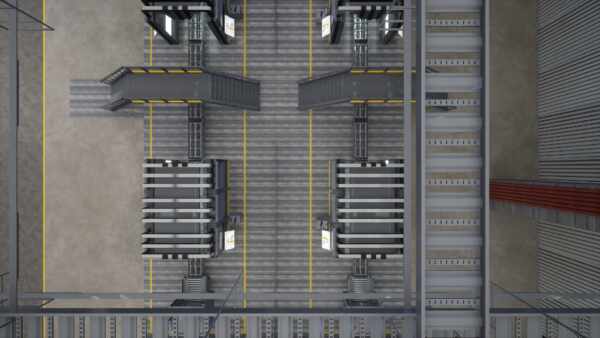The conveyor belt system is a critical component of any manufacturing facility, playing a significant role in the efficiency and reliability of the production process. However, over time, the conveyor belt can experience wear, damage, or other issues that may necessitate repair or replacement. The decision to repair or replace your conveyor belt can significantly impact your facility’s operations and budget. With this in mind, it’s crucial to make a well-informed decision that balances cost, efficiency, and functionality.
In this comprehensive guide, we’ll explore the factors to consider when facing the decision to repair or replace your conveyor belt system, as well as guidelines for assessing the condition of your conveyor belt and tips for prolonging its lifespan. With the knowledge and tools necessary to make the right decisions for your facility, your conveyor belt system will be able to support your production process effectively.
Conveyor Belt Repair vs. Replacement: Making the Right Decision for Your Facility
Assessing the Condition of Your Conveyor Belt
To make an informed decision between repairing or replacing a conveyor belt, it’s crucial to assess the overall condition of the belt thoroughly. Look out for:
1. Wear and Tear
Examine the conveyor belt for signs of wear and tear, such as abrasions, cuts, holes, or exposed fibres. Also, consider the belt’s overall age and how long it has been in service.
2. Damage Severity
Evaluate the scale and severity of the belt’s damage. Minor issues like surface cracks might be repairable, while more significant damage, such as belt misalignment or delamination, may warrant replacement.
3. Functionality
Determine whether the belt’s performance has been negatively impacted by the damage or if the issues are merely cosmetic. This assessment will inform the priority of addressing the issue and ascertain whether a repair will suffice or if a new belt is necessary.
Considering the Cost of Repair vs. Replacement
Once you have assessed the condition of your conveyor belt, the next step is to weigh the costs of repair versus replacement. Consider the following factors:
1. Repair Costs
Factor in the expenses associated with repairing the conveyor belt, including labour, materials, and downtime. It’s also essential to consider the likelihood of future repairs on the same belt if the damage is recurring or a symptom of a larger issue.
2. Replacement Costs
Estimate the costs of purchasing and installing a new conveyor belt, including dismantling and disposal of the old belt.
3. Production Impact
Weigh the impact of the repair or replacement on your production process, including any downtime required to carry out the maintenance.
4. Lifespan Extension
Consider the potential lifespan extension you can achieve with a repair compared to starting afresh with a new conveyor belt.
Tips for Prolonging Your Conveyor Belt Lifespan
To maximise the return on investment in your conveyor belt system, it’s essential to take steps to prolong its lifespan. Here are four key tips for extending the useful life of your conveyor belt:
1. Follow a Routine Maintenance Schedule
Routine maintenance is crucial for ensuring the longevity and reliability of your conveyor belt. Regularly inspect and clean the belt and make timely repairs to prevent minor issues from escalating into more significant problems.
2. Ensure Proper Belt Tension
Maintaining the correct tension on your conveyor belt will help to prevent issues such as slippage, tracking problems, and belt edge damage. Regularly inspect the belt for signs of improper tension and adjust as needed.
3. Implement Good Housekeeping Practices
Keeping your conveyor belt system clean and free from debris will help to prevent damage caused by abrasive materials. Regular cleaning, along with frequent inspections, can go a long way in preserving the belt’s condition.
4. Train Your Staff
Educate your staff on best practices for monitoring and maintaining the conveyor belt system, including how to identify and address potential issues promptly. A well-informed team can catch minor issues before they escalate, reducing repair costs and extending the belt’s lifespan.
Making the Right Decision for Your Facility
Having considered the condition of your conveyor belt, the associated costs, and steps for prolonging its lifespan, the decision between repair and replacement will ultimately come down to the specifics of your facility and production requirements. As a general guideline:
1. Proceed with Repair If:
– The damage is minor or superficial.
– The repair costs are significantly lower than replacement costs.
– The repair process will not cause extensive downtime or negatively impact the production process.
– Repairing the issue will adequately restore belt functionality and extend the belt’s lifespan.
2. Opt for Replacement If:
– The conveyor belt is nearing the end of its service life or is in overall poor condition.
– The damage’s severity, scale, or frequency indicates systemic issues that warrant complete belt replacement.
– The costs of repair are nearing or exceeding the cost of a new belt.
– Replacing the belt will offer improved performance, lower maintenance costs, and a longer lifespan.
Conclusion
The decision to repair or replace a conveyor belt system is crucial for maintaining production efficiency and cost-effectiveness in your facility. By carefully considering the conveyor belt’s condition, the costs associated with repair and replacement and adopting strategies to prolong its lifespan, you can make a well-informed decision that supports your operational requirements and budget. Remember that consulting with industry professionals can provide valuable insights into choosing the right course of action based on your unique situation.
Maximise the efficiency and lifespan of your conveyor belt system by making the smart decision between repair and replacement. Get in touch with Change Parts Pty Ltd today to discuss your conveyor belt challenges and discover how our expertise and innovative solutions can help you achieve optimal performance and cost-effectiveness.




